Digging into what is and isn’t working for Mitch White
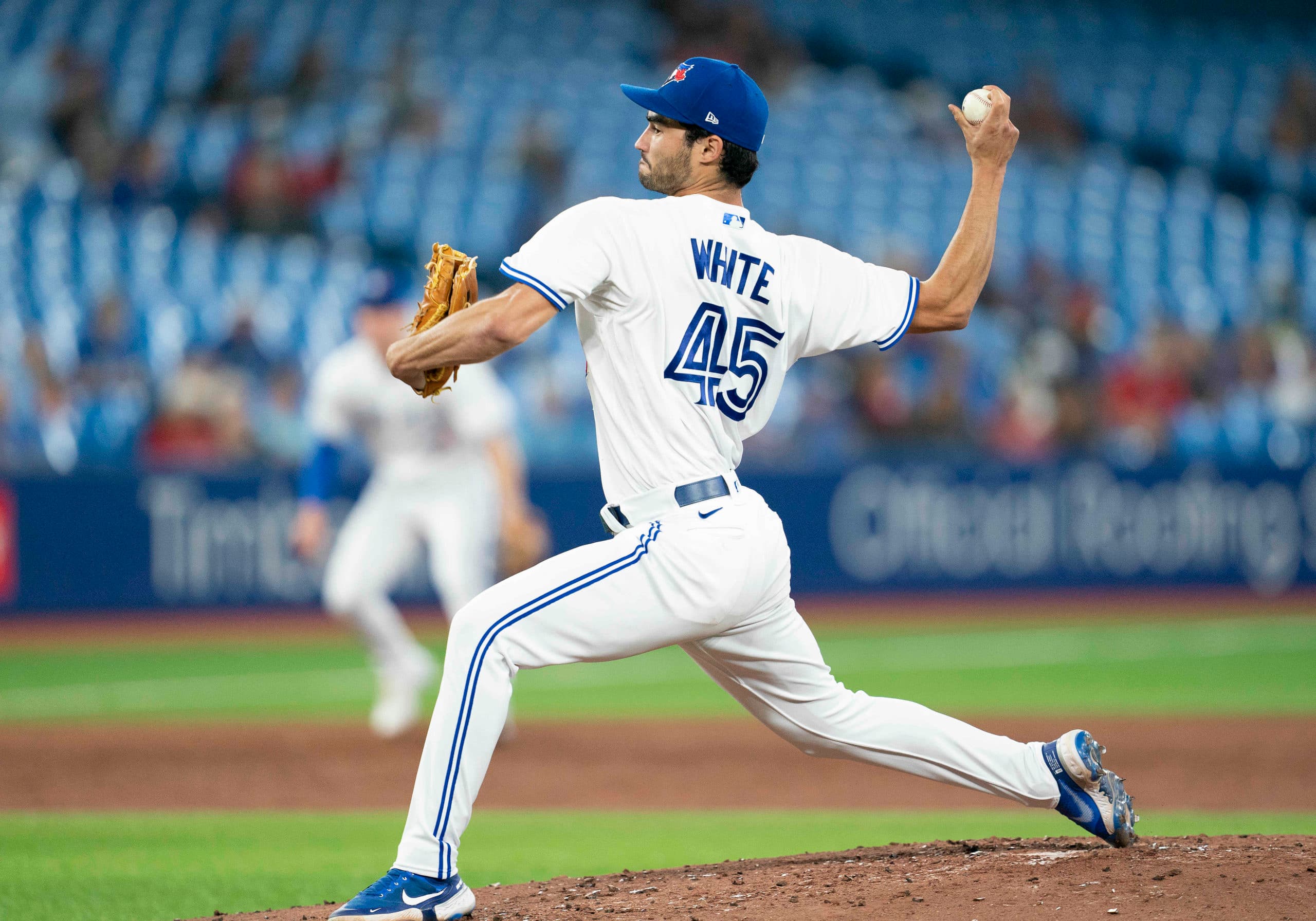
Photo credit: Nick Turchiaro-USA TODAY Sports
Sep 16, 2022, 12:00 EDTUpdated: Sep 16, 2022, 11:44 EDT
Mitch White has pitched in seven games for the Blue Jays since coming over in a trade with the Los Angeles Dodgers this season.
In that time, we’ve seen White make three solid starts, three poor starts, get sent down for a breather with Triple-A Buffalo, and then come back up and make a very strong outing against the Tampa Bay Rays following Julian Merryweather as the opener.
White has pitched 31 1/3 innings in the seven games he started (we’ll count the Rays game as a start for the sake of simplicity). In his first three outings, he had an ERA of 3.38. In the three games after that, his ERA ballooned to 13.50. So, what’s happening? Why can’t White control his starts?
Command
There are a lot of ways to analyze his poor performance since joining the Jays, however, one of the biggest factors for his lack of success can be boiled down to not being able to locate his pitches effectively while giving up a lot of hits.
Let’s start with where he is locating his pitches and how batters are reacting to them…
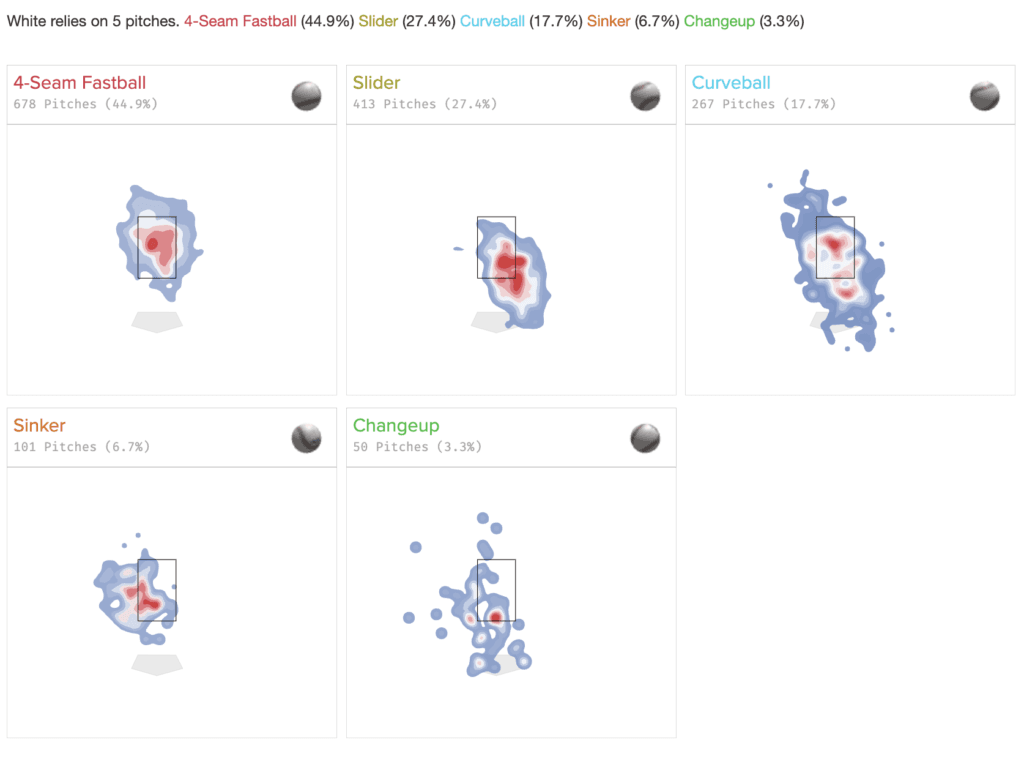
There’s a lot to boil down here, but White does not typically throw this many pitches in a regular game. So, let’s just use the pitches he uses most often…

Ah, clean data that’s better! So, these are White’s most used pitches, can you see what I see here? Maybe this will help a bit more.

White tends to throw his fastball most of the time with his secondary pitches (slider/curveball), being thrown to RHB and LHB exclusively.So, if a lefty batter comes up to the plate, they are likely to see a healthy dose of fastballs and curveballs.
He has about average velocity on these pitches however it’s the fastball usage that really jumps out to me. Relying on your fastball too much nowadays in the MLB is a recipe for getting rocked (especially if it does not have any magical movement). It’s been a trend now for the last decade that fastball usage is on the decline since batters have a much easier time hitting a fastball compared to breaking or off-speed pitches. I would say this is a cause for reflection for White since he throws his fastball basically 20 percent more often than his second most used pitch the slider.
Also, from the table above, we can clearly see he has a lot of trouble with locating his pitches and this is where the next part of my analysis will focus on.
Since he basically relies on three pitches (four-seam, slider, and curveball) they are crucial for success game in and game out. And while his slider looks like it generally hits his spot, his curveball (which he only throws to LHB), is located all over the strike zone. While it’s not being hit extremely hard (wOBA: .319), he does walk guys at a 10% clip with it second only to his fastball at 11.2 percent. In addition, the xBA for his curveball and fastball thrown to left-handed hitters is the highest it’s been in his career. For a pitch that’s only being thrown 17 percent of the time, it needs to improve.
While breaking pitches should be thrown outside the zone to generate swings and misses or weak contact, his chase rate for the curve sits at 25% but that should be much higher, like in the 40 percent range. And when looking at how pitchers generate strikeouts and weak contact with their curveball, White ranks 92nd (side note Jose Berrios ranks fourth in my table).
Moreover, White only gets the first pitch strike 59% of the time on the season while the league average is 64 percent. This indicates numerous things, but the main takeaway is that White just does not throw competitive pitches early in his at-bats leading to being down in the count forcing him to pitch for strikes with his fastball which he should be doing less of.
Plate Discipline
Let’s keep diving into his plate discipline stats on the season and see what else it tells us. According to FanGraphs, it doesn’t look pretty…
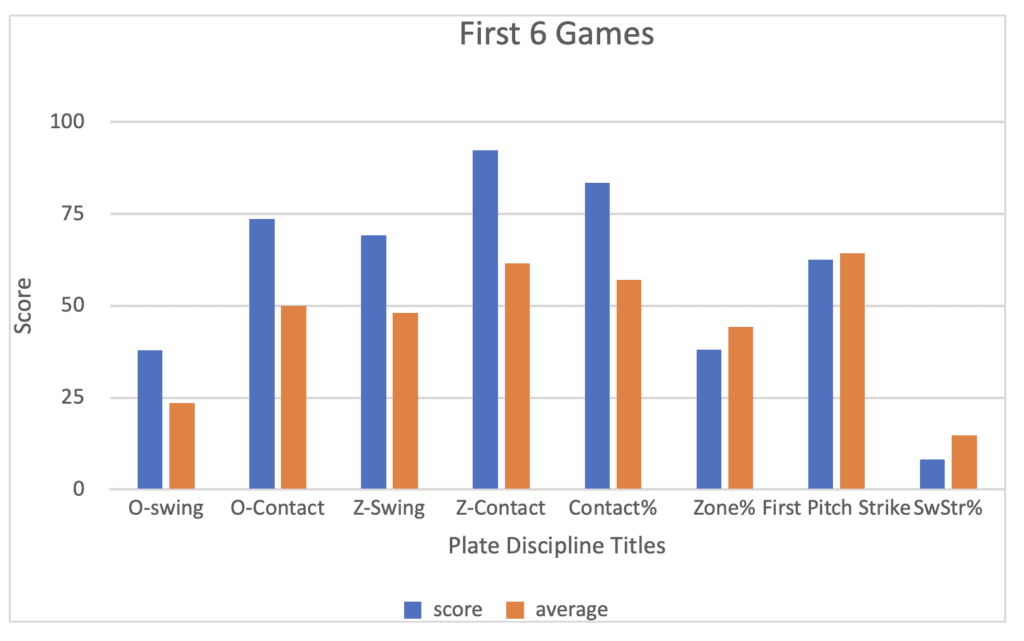
Let’s start with the first stat O-swing. Basically, this tells us the percentage of pitches that batters swing at outside the strike zone. It currently sits at 37.9 percent (and it’s 23.5 percent for the average pitcher) so batters are clearly willing to bite at his pitches outside the zone more than the average pitcher.
While this can be a good thing, because it causes batters to potentially induce weak contact and swing and misses plus swinging at balls, his O-contact (which is the level of contact that batters make at pitches outside the strike zone), currently sits at 23 percent higher than the average pitcher this season. So, if his pitch location is outside, batters are generating some degree of contact. This would be ok if his groundball rates were higher than the 42 percent it is now. But his line drive rate this year is at 21 percent which indicates batters are making decent contact on him with balls that have a high probability of being put into play.
His Z-swing is cause for higher concern in my opinion. This is the percentage of pitches batters swing at inside the zone. Currently White sits at 69.2 percent through his first six games while the average for an MLB pitcher is 48 percent. His Z-contact (basically the same thing as O-contact except for pitches inside the zone), sits at 92 percent whilst the MLB average is 61 percent. This is astronomically high and a massive cause for concern. His Batted Ball data indicates he does not get hit hard but gives up a lot of medium contact which is probably the reason why he gives up so many hits.
Lastly, his zone percentage (the percentage of pitches seen inside the strike zone) is low at 38 percent, while the average for pitchers is 44.3 percent. This means that not only are pitches in the zone consistently getting contact (inside or outside), but he also struggles to throw pitches inside the zone consistently. This might have to do with being traded across the continent and just relative fatigue, but no matter how you spin it, it’s not very impressive.
White does not have swing and miss stuff (whiff percentage 10th percentile), and on the pitches which are inside the zone, batters are swinging at and generating contact. In addition to not being able to generate strikeouts, his swinging strike percentage is 8.2 while the average is 14.8 percent. So there have not been many positives in this regard which is probably why his strikeout rates are so low.
The Good Starts vs. The Bad Starts
The main thought around White is that he performed better in his first three starts. While that may be true with a good ERA and even better FIP, his plate discipline numbers were still not good…
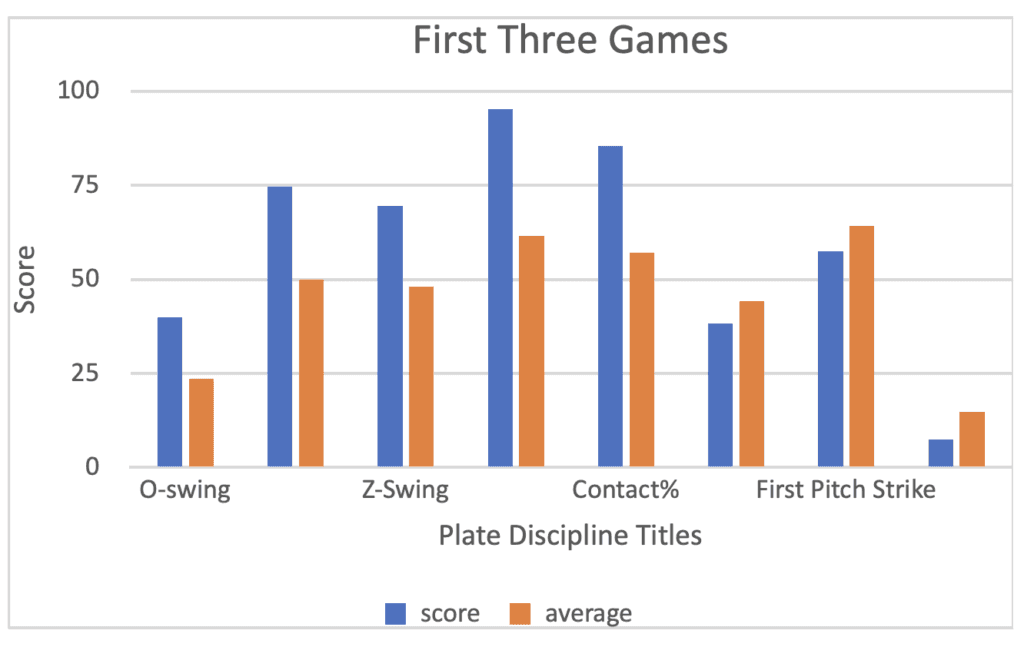
Compare this with his last three games and there is not much of a difference…
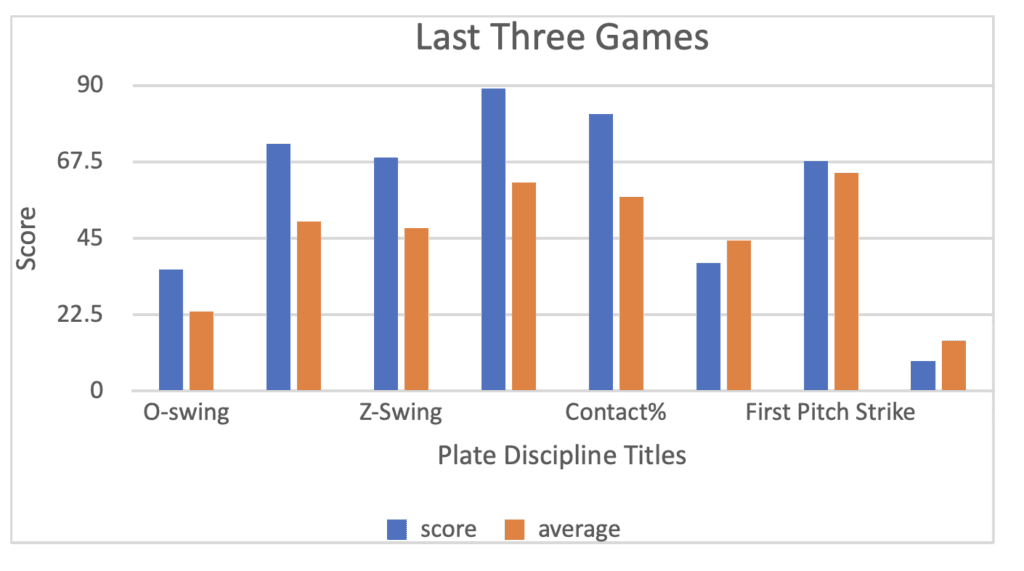
So why did the Blue Jays acquire him? What are the positives if he struggles so much with command? Well, the easy answer would be that they needed more quality depth at the starting pitcher position. And there are underlying stats indicating a potential bounce-back performance either late this year or next year.
For one, his hard-hit rate is very good, it’s in the 86th percentile which is one of the best in the league. Another good indicator is that his exit velocity sits in the 71st percentile. His first pitch strike numbers have improved substantially in his most recent starts which would indicate to me that he is starting to feel more comfortable with the team. This might also have to do with the decline in his fastball usage as it has gone down around 14 percent since his third game with the Jays.
In the last game he pitched on August 3 against the Rays, White pitched quite well. He went six innings and used his slider more often than his fastball for the first time this season. He also had the best hard-hit rate for his slider on the year, and his wOBA for the game was his lowest since July 6, and with a shorter extension in this start, maybe it’s a sign for things to come.
POINTSBET IS LIVE IN ONTARIO

Breaking News
- Where the Blue Jays can turn to on improving the roster
- Former Blue Jays right-hander Trent Thornton signs with the Chicago Cubs
- Blue Jays: 3 left-handed hitting targets to consider for the 2026 season
- What does the Blue Jays left-handed pitching depth look like in 2026?
- Former Blue Jays reliever Ryan Borucki signs minor-league deal with White Sox
